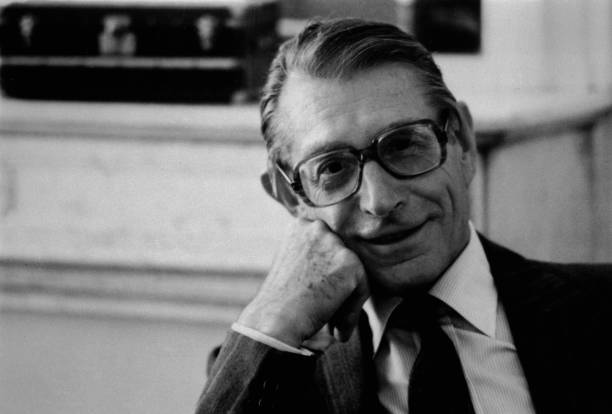CHAPTER 5: HENRY RACAMIER, THE ENLIGHTENED BUSINESSMAN
 Henry Racamier.
Henry Racamier.
Born in 1912 in Pont-de-Roide, in Doubs, Henry Racamier first attended French business school "HEC" and then made his career in steel industry, logical choice when one knows that he is the son of an engineer. He begins his working career at Peugeot steelworks. Ten years later, at the end of the war, he starts his own business in special steels trading, Stinox. He successfully runs his business, travels the world to give it an international dimension and will remain its head for thirty years until 1977 when he sells it to Thyssen. He is then sixty-five.
The story could end there: he has made a success of his life and deserves a little rest. But at the age when others quietly withdraw, Henry Racamier emerges from the shadows. His wife, Odile Vuitton, one of Louis Vuitton's great-granddaughters, is a shareholder of the brand with her five cousins. At the time, Louis Vuitton employs 70 people and consists in only two stores. Its turnover hardly exceeds the equivalent of 10 million euros. Louis Vuitton, prestigious but modest SME, more and more often asks Henri Racamier for advice before entrusting him the management in 1977.
True trade genius, Henry Racamier starts from a simple observation: it is in the retail market that one earns the most money. He therefore opens a network of more than a hundred shops in ten years, particularly in Japan and the United States where the French luxury brand is much appreciated. In parallel the brand reworks its marketing, although it already has a very strong reputation, notably for being able to always meet its most difficult customers’ requirements. Henry Racamier makes the LV monogrammed canvas a world-renowned luxury emblem and endows Vuitton with a powerful image. 20 years later, Louis Vuitton posts a turnover of 690 million euros, i.e. sixty times more than on Henry Racamier’s arrival.
In June 1987, Louis Vuitton, leader of high-end luggage, merges with Moët-Hennessy, king of champagne and cognac. LVMH is born and becomes one of the stars of the Stock Exchange... Temporally. During the stock market crash of October 1987, LVMH weakens. A man has clearly got it: Bernard Arnault. This financier, who has already taken over Boussac and Dior, discreetly buys LVMH shares. When a few months later Henry Racamier seeks an ally to establish LVMH on the stock market again, Bernard Arnault seems to be the ideal candidate. Bernard Arnault, joined together with Guinness, will take control of LVMH, by joining forces alternately with the ones or the others and eventually will oust Chevalier, Moët-Hennessy's boss, and Racamier. In April 1990, Bernard Arnault is officially recognized as managing director of LVMH.
Henry Racamier will die on 29 March 2003.

